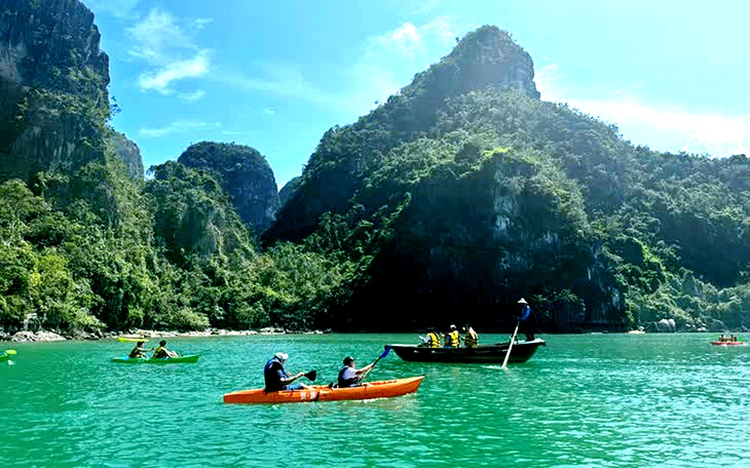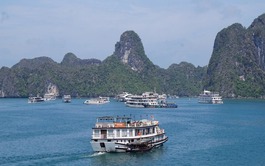
Tourists explore Ha Long Bay in Quang Ninh Province, northern Vietnam. Photo: Thien Dieu / Tuoi Tre
Stunning landscapes, rich culture, welcoming people, and delicious cuisine—all present.
But perhaps Vietnam still lacks the ability to tell a compelling, human-centered story about its destinations.
Tourists from Europe and America do not come to Vietnam for electronic music, light shows, or seafood buffets.
They seek slowness, deep cultural immersion, and authentic local connections—something that centuries-old fishing villages in Ha Long Bay can offer, if they are preserved rather than turned into artificial tourist models.
Vietnamese tourism, especially in Quang Ninh, still chases numbers—how many visitors, how many boats, how many hotel rooms.
But the more important questions are: How long do tourists stay? How much do they spend? Do they want to come back?
Vietnam needs a new approach to tourism, one that is thoughtful, fulfilling, meaningful, and offers choice.
Tourists should not be treated as statistics but as travelers seeking personal experiences, privacy, and emotional connection.
Imagine journeys through untouched bays where tourists can kayak through sea caves, practice sunrise yoga, paint in quiet coves, enjoy freshly caught fish, and hear fishermen’s life stories.
These may not be grand experiences but they are the kind that stirs the heart.
Currently, many overnight cruise ships cluster in one area, forming 'floating cities' filled with lights, noise, and waste, losing the essence of a natural experience.
Meanwhile, international tourists, especially from Europe and America, do not like being herded. They want privacy, respect for nature, and storytelling, not lectures.
Ha Long is more than just limestone and water.
It is a cultural seascape, home to the centuries-old Van Don trading port, a unique geological system, and rich stories of coastal communities.
If tourism is to be a form of 'on-site export,' it must be treated as a true economic sector, not just organizing tours and sending tourists off.
Vietnam lacks destination managers with sustainable thinking and a national team of skilled tourism professionals.
And what remains consistently missing is a clear policy that connects destination branding with distinctive visitor experiences.
A leading industry cannot thrive with fragmented efforts and no long-term strategy.
The government must play a supportive role so that businesses can better serve travelers.
Businesses, in turn, must understand they cannot develop tourism alone.
They need support through solid infrastructure, efficient procedures, streamlined visa policies, transparent tax refund systems, and attractive duty-free shopping zones.
More importantly, Vietnam must create intelligent, differentiated tourism products that blend nature, culture, and people.
Each locality must tell its own story, not just copy-paste experiences.
Tourists will return if they feel a deep spiritual value in their journeys.
That is how Vietnamese tourism can gain a true identity, global rankings, and an enduring presence on the world map.
* This article was originally written in Vietnamese by Pham Ha, chairman of Luxgroup, and rewritten in English by Tuoi Tre News.



Max: 1500 characters
There are no comments yet. Be the first to comment.